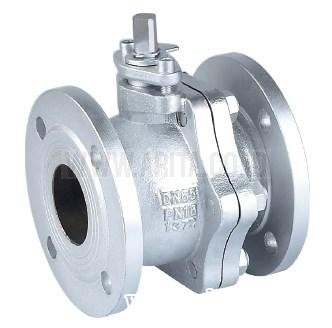Jual Ball Valve ARITA
Lokasi :
Jawa Tengah - Batang
Update Terakhir :
06-10-2016 14:40
Detail Produk
A ball valve is a form of quarter-turn valve which uses a hollow, perforated and pivoting ball to control flow through it. It is open when the ball’s hole is in line with the flow and closed when it is pivoted 90-degrees by the valve handle. The handle lies flat in alignment with the flow when open, and is perpendicular to it when closed, making for easy visual confirmation of the valve’s status. The ball valve’s ease of operation, repair, and versatility lend it to extensive industrial use, supporting pressures up to 1000 bar and temperatures up to 752°F (500°C), depending on design and materials used. Sizes typically range from 0.2 to 48 inches (0.5 cm to 121 cm). Valve bodies are made of metal, plastic, or metal with a ceramic; floating balls are often chrome plated for durability.


